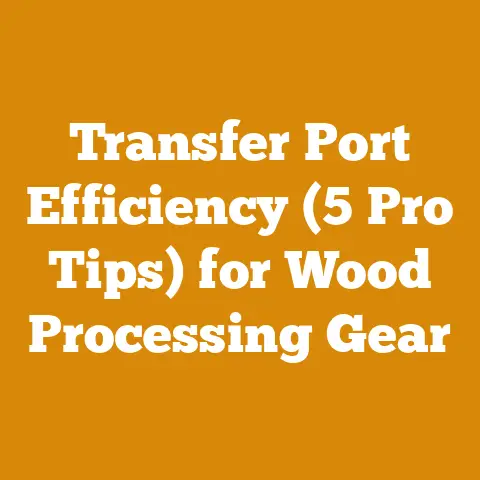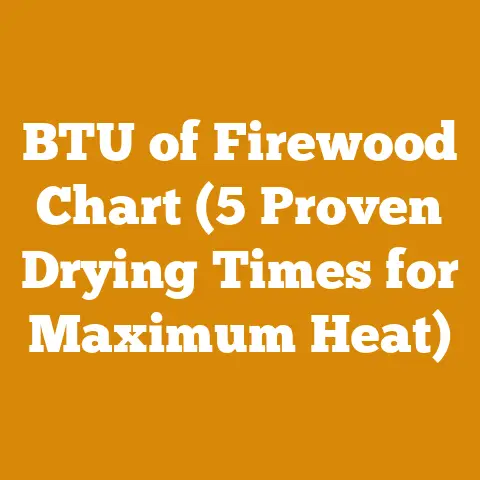Insulation for Timber Frame Houses (5 Pro Woodworking Methods)
Introduction: Crafting Comfort – The Heart of Timber Frame Home Insulation
For me, a timber frame home isn’t just a structure; it’s a legacy. It’s the embodiment of handcrafted beauty and enduring strength. But all that visual appeal and structural integrity means nothing if the home isn’t comfortable, and that’s where insulation comes in. The right insulation strategy transforms a timber frame from a beautiful shell into a cozy, energy-efficient haven. I’ve learned over the years that insulating a timber frame house isn’t just about stuffing material into walls; it’s about understanding the unique characteristics of the frame itself and how it interacts with the insulation system. It’s about creating a thermal envelope that breathes, protects, and keeps you comfortable year-round. In the following sections, I’ll delve into five pro woodworking methods for insulating timber frame homes, sharing my experiences, insights, and the technical details you need to get the job done right.
2. In-Fill Insulation: Filling the Gaps with Precision
What is In-Fill Insulation?
In-fill insulation involves filling the spaces between the timber frame members with insulation material. This method is a classic approach, and I’ve seen it executed with various materials, each with its pros and cons. The key is to choose the right material and installation technique to create a tight, effective thermal barrier.
3. Exterior Continuous Insulation: Wrapping Your Home in Protection
What is Exterior Continuous Insulation?
Exterior continuous insulation (CI) involves wrapping the entire exterior of the timber frame with a layer of insulation. This method minimizes thermal bridging, a common problem in timber frame construction where heat can escape through the timber members. CI creates a consistent thermal barrier, improving energy efficiency and reducing the risk of condensation. I’ve become a big proponent of this method, especially in colder climates, because of its ability to dramatically improve the thermal performance of a timber frame.
Benefits of Exterior Continuous Insulation
- Eliminates Thermal Bridging: CI prevents heat loss through the timber frame members, creating a more energy-efficient building envelope.
- Reduces Condensation Risk: By keeping the timber frame warmer, CI reduces the risk of condensation, which can lead to rot and decay.
- Improves Indoor Comfort: CI creates a more consistent indoor temperature, eliminating cold spots and drafts.
- Extends the Lifespan of the Timber Frame: By protecting the timber frame from moisture and temperature fluctuations, CI can extend its lifespan.
Common Materials for Exterior Continuous Insulation
- Rigid Foam Boards (XPS, EPS, Polyiso): Rigid foam boards are a popular choice for CI due to their high R-value and ease of installation. XPS is a good option for below-grade applications due to its moisture resistance.
- Mineral Wool Boards: Mineral wool boards provide good insulation value and are fire-resistant. They are also more breathable than rigid foam boards, allowing moisture to escape from the wall assembly.
- Wood Fiber Boards: Wood fiber boards are an eco-friendly option made from recycled wood fibers. They provide good insulation value and are vapor-permeable, allowing moisture to escape from the wall assembly.
Technical Specifications for Exterior Continuous Insulation
- R-Value Requirements: Determine the required R-value based on your climate zone and local building codes. Consult with a building energy expert to determine the optimal R-value for your timber frame home.
- Material Thickness: The thickness of the CI material will depend on the desired R-value and the material’s thermal properties. Refer to the manufacturer’s specifications for recommended thicknesses.
- Fastener Spacing: Use fasteners recommended by the CI manufacturer to attach the insulation to the timber frame. Ensure proper spacing and penetration depth for secure attachment.
- Air Barrier: Install a continuous air barrier over the CI to prevent air leakage. Use sealant, caulk, and flashing to seal gaps and cracks.
- Cladding Attachment: Provide a method for attaching the exterior cladding to the timber frame through the CI. This may involve using furring strips or specialized cladding attachment systems.
Installation Tips for Exterior Continuous Insulation
- Prepare the Surface: Ensure the timber frame is clean and free of debris before installing the CI.
- Accurate Cutting: Cut the CI material accurately to fit around windows, doors, and other openings.
- Stagger Joints: Stagger the joints between the CI boards to prevent thermal bridging.
- Seal All Gaps: Seal all gaps and cracks around the CI with sealant or caulk.
- Proper Fastening: Use fasteners recommended by the CI manufacturer to attach the insulation to the timber frame. Ensure proper spacing and penetration depth for secure attachment.
Case Study: Continuous Insulation in a High-Performance Timber Frame
I worked on a project involving the construction of a high-performance timber frame home in a cold climate. We used 4-inch thick rigid foam boards for exterior continuous insulation, providing an R-value of R-20. We installed a continuous air barrier over the CI and used furring strips to attach the exterior cladding. The result was a highly energy-efficient home with minimal thermal bridging. The homeowners reported significantly lower heating bills compared to similar homes in the area. The key to success was meticulous attention to detail and a commitment to using high-quality materials.
4. Hybrid Insulation Systems: The Best of Both Worlds
What are Hybrid Insulation Systems?
Hybrid insulation systems combine two or more insulation methods to achieve optimal thermal performance and energy efficiency. This approach allows you to leverage the strengths of different materials and techniques to create a customized insulation solution for your timber frame home. I’ve found that hybrid systems often provide the most cost-effective and energy-efficient results, especially in complex or challenging building scenarios.
Common Hybrid Insulation Combinations
- In-Fill Insulation + Exterior Continuous Insulation: This combination provides a high level of insulation and minimizes thermal bridging. It involves filling the spaces between the timber frame members with insulation material and then wrapping the entire exterior of the home with a layer of continuous insulation.
- Spray Foam + Rigid Foam Boards: This combination offers excellent air sealing and insulation value. Spray foam is used to fill gaps and cracks, while rigid foam boards provide a continuous layer of insulation.
- Mineral Wool + Wood Fiber Boards: This combination is an eco-friendly option that provides good insulation value and breathability. Mineral wool is used for in-fill insulation, while wood fiber boards are used for exterior continuous insulation.
Advantages of Hybrid Insulation Systems
- Optimized Thermal Performance: Hybrid systems can be tailored to meet specific energy efficiency goals and climate conditions.
- Improved Air Sealing: Combining different insulation materials and techniques can create a tighter building envelope, reducing air leakage.
- Enhanced Moisture Management: Hybrid systems can be designed to allow the timber frame to breathe and prevent moisture buildup.
- Cost-Effectiveness: By combining less expensive and more expensive insulation materials, hybrid systems can achieve optimal performance at a reasonable cost.
Technical Specifications for Hybrid Insulation Systems
- R-Value Requirements: Determine the required R-value based on your climate zone and local building codes. Consult with a building energy expert to determine the optimal R-value for your timber frame home.
- Material Compatibility: Ensure the insulation materials are compatible with each other and with the timber frame. Avoid materials that can react negatively or create moisture problems.
- Air Barrier: Install a continuous air barrier to prevent air leakage. Pay close attention to sealing joints and penetrations.
- Moisture Management: Design the insulation system to allow the timber frame to breathe and prevent moisture buildup. Consider using a vapor retarder or vapor-permeable membranes.
- Installation Sequence: Follow the recommended installation sequence for the different insulation materials. Ensure proper sealing and attachment at each step.
Installation Tips for Hybrid Insulation Systems
- Plan Carefully: Develop a detailed plan for the hybrid insulation system before starting the installation. Consider the climate, building design, and energy efficiency goals.
- Follow Manufacturer’s Instructions: Follow the manufacturer’s instructions for each insulation material.
- Proper Sealing: Pay close attention to sealing all gaps and cracks. Use sealant, caulk, and flashing to create an airtight seal.
- Professional Consultation: Consult with a building energy expert or insulation contractor to ensure the hybrid insulation system is properly designed and installed.
Case Study: A Hybrid Insulation System in a Passive House Timber Frame
I consulted on a project involving the construction of a passive house timber frame home. We used a hybrid insulation system consisting of in-fill insulation with mineral wool and exterior continuous insulation with wood fiber boards. We also used spray foam to seal gaps and cracks around windows and doors. The result was an extremely energy-efficient home that met the stringent requirements of the passive house standard. The key to success was careful planning, meticulous installation, and a commitment to using high-quality materials. We also conducted blower door tests at various stages of the construction to ensure the building was airtight.
5. Straw Bale In-Fill: A Natural and Sustainable Option
What is Straw Bale In-Fill?
Straw bale in-fill involves using straw bales to fill the spaces between the timber frame members. This method is a natural and sustainable option that provides excellent insulation and sound dampening. I’ve always been impressed by the thermal performance of straw bale homes, and it’s a testament to the power of natural building materials.
Advantages of Straw Bale In-Fill
- High Insulation Value: Straw bales have an R-value of approximately R-1.5 to R-2 per inch, providing excellent insulation. A typical straw bale wall can have an R-value of R-30 to R-40.
- Sustainability: Straw is a readily available and renewable resource. Using straw bales for insulation reduces the demand for manufactured insulation materials.
- Sound Dampening: Straw bales provide excellent sound dampening, creating a quiet and peaceful indoor environment.
- Breathability: Straw bales allow moisture to escape from the wall assembly, preventing moisture buildup and rot.
Disadvantages of Straw Bale In-Fill
- Moisture Sensitivity: Straw bales are susceptible to moisture damage. Proper moisture management is essential.
- Space Requirements: Straw bale walls are thicker than conventional walls, requiring more space.
- Labor-Intensive: Installing straw bales can be labor-intensive, requiring specialized skills and equipment.
- Building Codes: Straw bale construction may not be permitted in all areas due to building code restrictions.
Technical Specifications for Straw Bale In-Fill
- Bale Quality: Use dry, dense, and tightly packed straw bales. The moisture content of the bales should be below 20%.
- Bale Size: Standard straw bale sizes vary but are typically around 36 inches long, 18 inches wide, and 14 inches high.
- Bale Orientation: Orient the straw bales with the cut ends facing out to allow for better air circulation and drying.
- Compression: Compress the straw bales tightly to create a dense and stable wall. Use straps or other compression devices to maintain the compression.
- Plaster: Apply a breathable plaster to the interior and exterior of the straw bale wall to protect it from moisture and fire. Use a natural plaster made from clay, lime, or earthen materials.
Installation Tips for Straw Bale In-Fill
- Foundation: Build a solid and level foundation to support the straw bale walls.
- Moisture Barrier: Install a moisture barrier between the foundation and the straw bales to prevent moisture wicking.
- Bale Placement: Place the straw bales tightly together, overlapping the joints to prevent air leakage.
- Compression: Compress the straw bales tightly to create a dense and stable wall. Use straps or other compression devices to maintain the compression.
- Plastering: Apply the plaster in multiple coats, allowing each coat to dry thoroughly before applying the next.
Case Study: A Straw Bale Timber Frame Home in the Desert
I consulted on a project involving the construction of a straw bale timber frame home in the Arizona desert. The homeowners wanted a sustainable and energy-efficient home that could withstand the harsh desert climate. We used locally sourced straw bales for in-fill insulation and applied a natural clay plaster to the interior and exterior walls. The result was a comfortable and energy-efficient home that blended seamlessly with the surrounding landscape. The key to success was careful attention to moisture management and the use of breathable building materials. We also incorporated passive solar design principles to further reduce energy consumption. We used a lime plaster on the exterior to allow the building to breath and not trap any moisture.
Conclusion: Crafting a Comfortable and Sustainable Timber Frame Home






